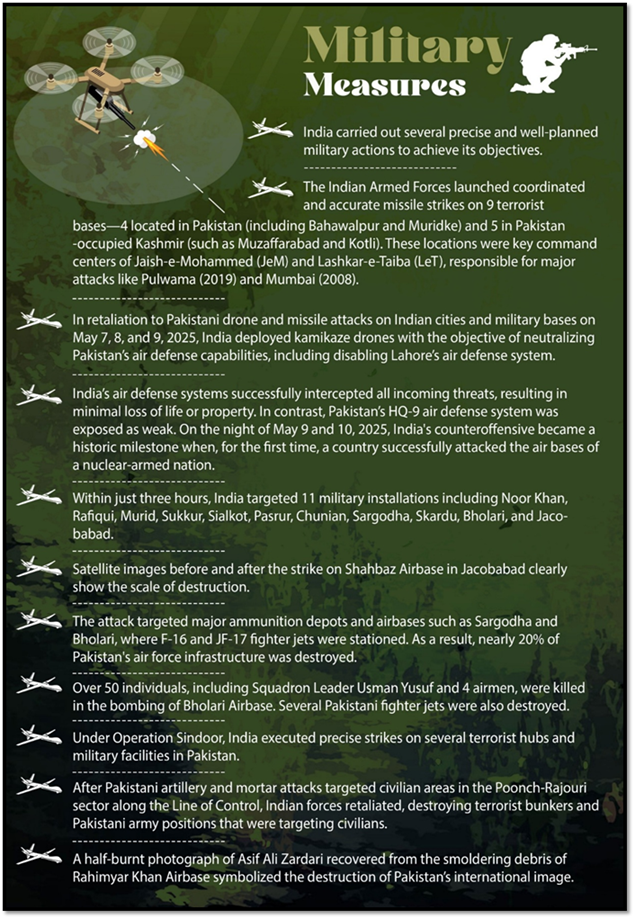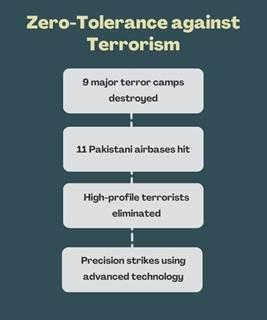Topic-1: Historic Anti-Naxal Operation at Karreguttalu Hill (KGH)
GS Paper 3: Internal Security
The context: In April–May 2025, India witnessed the biggest-ever anti-Naxal operation, executed over 21 days (April 21 to May 11, 2025) at Karreguttalu Hill (KGH) on the Chhattisgarh-Telangana border.
Strategic Importance of Karreguttalu Hill (KGH):
-
- It is an extremely difficult hilly region located between the border of Chhattisgarh and Telangana, approximately 60 km long and 5 to 20 km wide, with a very tough and challenging geographical terrain.
- It was the main base for many Naxal groups which they used for training Naxals, making weapons, and planning attacks.
- The region hosted over 300–350 armed cadres, including technical units and leadership.
Major achievements in anti-Naxal operations:
-
- It was the biggest and most successful fight against Naxals so far.
- It demonstrates the success of integrated security and development strategy in conflict zones.
- Under this operation, security guards killed 31 Naxals, including 16 women in uniform, and recovered several weapons.
- It boosts morale of security forces and confidence among local populations.
- It proves that security and development together can bring peace.
Progress in Naxal-affected areas (2014–2025):
1. Naxal-affected districts reduced from 126 in 2014 to just 18 in 2025.
2. Highly affected districts dropped from 35 to only 6.
3. Naxal-related incidents declined from 1080 in 2014 to 374 in 2024.
4. Security personnel deaths came down from 88 to 19 in the same period.
5. Over 1,600 Naxals surrendered in just the last 16 months.
Source: PIB
Topic-2: Operation SINDOOR: India’s Strategic Clarity and Calculated Force
GS- 2: International Relations; GS-3: Internal Security
The context: On April 22, Pakistan-backed militants attacked a village in Pahalgam, killing 26 people to fuel communal violence. In response, India launched Operation SINDOOR to destroy the terror bases behind the attack.
Operation SINDOOR: India’s Strategic Response
-
- Indian government decisively led Operation SINDOOR balancing the strategic restraint with assertive action.
- India ensured well-planned and timed responses, including suspending the Indus Waters Treaty and targeting terror infrastructure precisely.
- The operation targeted only high-value terror installations, avoiding civilian areas, earning bipartisan praise.
- The GoI maintained India’s firm stance that terrorism and its sponsors are equally culpable, garnering international support.
- The suspension of the Indus Waters Treaty marked a historic shift, impacting Pakistan strategically and benefiting India.
Ceasefire and Aftermath
-
- Ceasefire agreed between Indian and Pakistani DGMOs effective from May 10, 2025.
- Post-ceasefire, Pakistan violated peace through drone incursions; India intercepted these effectively.
- Indian commanders were authorized to act decisively against any ceasefire violations.
The Paradigm Shift in Modern Warfare Highlighted in Operation Sindoor
-
- Layered Air Defence: India combined indigenous systems (Akash, QRSAM) with advanced imports (S-400, Barak-8) for multi-tiered aerial protection.
- Smart Defence Networks: Akashteer digitally fuses radar data for real-time, adaptive decision-making, moving beyond rigid systems.
- Indigenous Capacity Building: Emphasis on domestic innovation like Project Kusha to reduce foreign dependency and boost strategic autonomy.
- Information Warfare Front: Psychological operations and digital disinformation by Pakistan show the critical role of perception management in conflict.
- Global Information Warfare Trends: Similar tactics seen in Israel-Palestine and Russia-Ukraine highlight the importance of controlling the narrative.
- Countering Disinformation: India requires strong technology, resilient media, and effective institutional communication to combat info warfare.
- Strategic Deterrence Shift: India adopted calibrated, proportionate response strategies, avoiding full-scale war but signaling strength.
- Doctrinal Evolution: Focus on swift response, integrated offensive/defensive layers, and escalation control marks new-age warfare doctrine.
- Joint Operations: Integrated Air Command and Control System (IACCS) enabled real-time coordination among Army, Navy, and Air Force.
- Institutional Synergy: Enhanced intelligence sharing and interoperability demonstrate maturity in India’s defence framework.
- Emerging Challenges: Increased use of UAVs and cyber tools by adversaries demands continuous evolution in military and cybersecurity strategies.
Operational Achievements and Military Highlights
-
- Nine terror camps eliminated (including Lashkar-e-Taiba, JeM, Hizbul Mujahideen).
- Over 100 terrorists neutralized, including high-value commanders linked to major past attacks.
- Cross-border strikes extended into Pakistani heartland (Punjab, Bahawalpur), expanding India’s operational red lines.
- India’s Air Force demonstrated technological superiority:
- Successful penetration and jamming of Pakistan’s Chinese air defense.
- Completion of strikes in just 23 minutes using Rafale jets, SCALP missiles, HAMMER bombs.
- Indian multi-layered air defense shot down hundreds of drones/missiles.
- Strikes on 11 Pakistani airbases, crippling 20% of Pakistan’s air force assets.
- Demonstrated tri-service coordination (Army, Navy, Air Force).
- A new strategic red line established: terror as state policy invites direct, forceful retaliation.
Geopolitical and Strategic Impact:
-
- Operation SINDOOR changed South Asia’s security situation:
- India no longer differentiates terrorists from their state sponsors.
- Pakistan’s strategic depth for terror operations has been reduced.
- International community sees India as a responsible power with moral and legal justification.
- Decoupling the Kashmir conflict from terrorism narratives helped India reframe the global discourse.
- Set precedent for future Indian responses to terrorism as acts of war.
- Demonstrated India’s ability to execute precise, limited, and strategic military actions without escalation to full-scale war.
- Operation SINDOOR changed South Asia’s security situation:
Conclusion:
India’s response to the Pahalgam attack was firm and principled. Operation SINDOOR changed the strategic landscape of South Asia. It was not merely a military campaign, but a multidimensional assertion of India’s sovereignty, resolve, and global standing. India showed strength with restraint, sending a clear message that terrorism will be met with swift and decisive action.
Source: PIB
Topic-3: Operation SINDOOR: The Rise of Aatmanirbhar Innovation in National Security
GS- 3: Internal Security; Science & Technology
The context: Operation SINDOOR was launched as a precise Indian military response to asymmetric terrorist attacks targeting civilians and military personnel, especially after the April 2025 Pahalgam attack.
-
- Strategic Response: India struck terrorist infrastructure without crossing the Line of Control (LoC) or international borders, showing tactical restraint and precision.
- Air Defence Success:
- Pakistan launched drones and missiles targeting multiple Indian locations on May 7-8, 2025.
- Indian Integrated Counter-UAS (Unmanned Aerial Systems) and Air Defence systems successfully neutralized these threats.
- Indigenous systems like Akash missile and legacy guns (Pechora, OSA-AK, LLAD) showed stellar performance.

-
- Integrated Command: The Indian Air Force’s Integrated Air Command and Control System (IACCS) provided net-centric coordination for layered defence.
- Offensive Precision: Surgical strikes on Pakistani airbases Noor Khan and Rahimyar Khan used loitering (kamikaze) drones to destroy key enemy radar and missile assets.
All strikes were executed without any Indian losses. - Technological Edge: Indian forces jammed and bypassed Pakistan’s Chinese-supplied air defence, completing the mission in just 23 minutes.
- Evidence of Neutralized Threats: Indian forces recovered foreign-origin hostile weapons including Chinese PL-15 missiles, Turkish UAVs (“Yiha”), long-range rockets, and drones.
- Multi-layered Defence: A combination of counter-drone systems, shoulder-fired weapons, legacy and modern air defence weapons from Army and Air Force created an impenetrable shield, preventing enemy retaliation.
- ISRO’s Role: At least 10 satellites are continuously working round-the-clock for the strategic purpose to ensure the safety and security of the citizens of the country. To ensure the safety of the country, the nation has to serve through its satellites. It has to monitor its 7,000 km seashore areas. It has to monitor the entire Northern part continuously.
Rising Indigenous Drone Industry:
-
- India’s drone market is expected to reach $11 billion by 2030.
- Over 550 drone companies and 5500 pilots operate under the Drone Federation India (DFI).
- Companies like Alpha Design Technologies, Tata Advanced Systems, Paras Defence, and IG Drones lead drone innovation and manufacturing.
Government Initiatives: Since 2021, policies like banning drone imports and the Production Linked Incentive (PLI) scheme have boosted domestic drone R&D and production.
Defence Manufacturing Boom:
-
- Indigenous defence production hit a record ₹1.27 lakh crore in FY 2023-24.
- Defence exports reached ₹23,622 crore in FY 2024-25 (a 34-fold increase since 2013-14).
- Advanced indigenous platforms include:
- Akash missile system
- Dhanush and ATAGS artillery guns
- Light Combat Aircraft Tejas
- Indigenous naval vessels and submarines
- India aims to become the world’s largest defence exporter by 2047, with targets of ₹3 lakh crore production and ₹50,000 crore exports by 2029.
Conclusion:
Operation SINDOOR validates India’s defence indigenization efforts, showcasing how domestic technology, private-public collaboration, and strategic vision are transforming India into a high-tech military power ready for future technology-driven warfare.
Source: PIB
Topic-4: Inclusive India Summit-2025
GS- 2: Governance and Social Justice
The context: On the occasion of Global Accessibility Awareness Day (GAAD), the Department of Empowerment of Persons with Disabilities (DEPwD) under the Ministry of Social Justice and Empowerment is organizing the ‘Inclusive India Summit’ on May 15, 2025.
About Global Accessibility Awareness Day (GAAD):
-
- It is observed annually on the third Thursday of May.
- It is dedicated to raising awareness around digital access and inclusion for persons with disabilities across the globe.
- The theme of 2025 is “Accessibility for All in a Digital India” (as inferred from the summit objectives).
- It will be held in a hybrid mode, both physical and virtual at the India International Centre, New Delhi.
- It is being conducted in partnership with SBI Foundation and the National Association for the Blind (NAB), New Delhi, besides collaboration with the Association of People with Disability (APD) and Mission Accessibility (Dhananjay Sanjogta Foundation).
The objective of the summit:
-
- The summit aims to “promote inclusive growth and digital access for all”.
- It brings together government, industry, academia, and the Divyang community.
- Mission Accessibility will launch its “annual Accessibility Report Card”.
- An ‘AI chatbot’ will be introduced to help with government schemes.
- A draft curriculum on ‘digital accessibility’ will be shared for tech and design courses.
- The ‘Inclusive India Summit’ is not only an initiative to bring inclusivity to the forefront but also a significant step toward making ‘the digital world accessible to all’.
Source: PIB
Spread the Word


